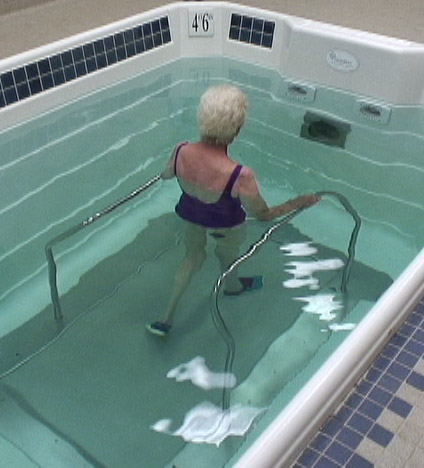The following blog post has been summarized for the recent article published in January/February 2014 Issue of Rehab Management titled, “Aquatic Management for Patients with Arthritis and Joint Replacement Conditions,” by Daniel Seidler, PT, MS.


Daniel Seidler, PT, MS, is the Executive Director of WSPT, a physical therapy, aquatic therapy, and wellness center. In this article, he talks about how to manage patients that are getting started on aquatic therapy including: assessing the patient prior to water therapy, introducing the patient to the pool, introducing the patient to aquatic exercises and opening the door to water workouts beyond therapy.
The process begins with evaluating the patient and getting to know the type of condition or injury they have. The physical therapist performs a thorough assessment to evaluate the patient. Once an assessment is performed, the PT can then guide the patient’s treatment plan to what will best will fit their needs. Additionally, it is helpful for the PT to review with the patient on practical rehabilitation activities occur.
An important factor in managing your patient effectively is introducing them to the pool in the correct manner.
“Many patients have heard of water therapy, but may never have had this kind of rehabilitation. Others may be squeamish about getting into the water, or hesitant about putting on a swimsuit.”
Physical therapists should be aware of several key reasons patients are hesitant to get in the water:
The exercises the PT can perform depends on the patient and their conditions. Many patients see the pool as a place where they can do exercises that they may not be able to on land, giving them a sense of accomplishment.
“One of the most heartening experiences aquatic PTs discuss is the desire for patients to continue working in the therapy pool beyond their prescribed treatment plans.”
Download the Arthritis and Joint Replacement Information Sheet!
Kurt Stork, PT, Director of Rehabilitation at Four States Physical Therapy & Aquatic Rehabilitation & Premier Surgical Institute, provides you with reasons and outcomes as to why use aquatic therapy works. To find out more about how aquatic therapy and exercise can be beneficial for those suffering from osteoarthritis or joint replacements, download this tipsheet!
This post was last modified on March 20, 2019 10:46 am
In the competitive world of sports, recovery is as crucial as training itself. Athletes continuously…
Aquatic interval training is revolutionizing the way we approach fitness, particularly cardiovascular health. This training…
Underwater treadmill training is a revolutionary method for athletes looking to build strength and endurance…
Monitoring progress in aquatic conditioning is essential for facilities looking to enhance their fitness programs…
Falls pose a significant risk for seniors, often leading to severe injuries, decreased mobility, and…
Rehabilitation is a crucial aspect of recovery for athletes and individuals recovering from injuries, and…